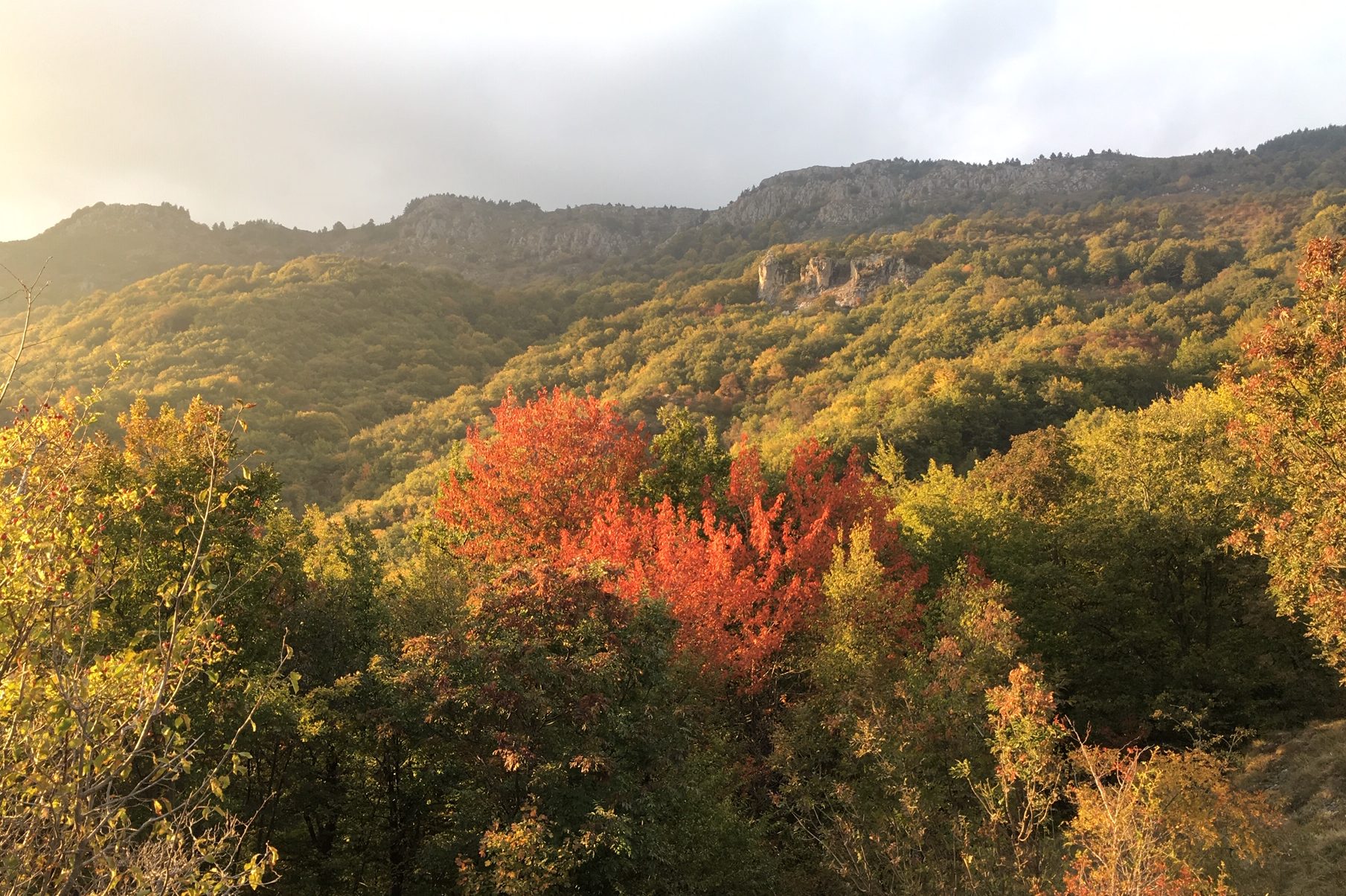Planning an African safari in search of the Big Five? You might not need to travel that far. James Parry heads to the wild north of Greece, a land of bears, wolves, jackals and, err, a large bird that makes a sound like a popping cork
When the mist slowly clears, we begin to understand exactly where we are. A long drive from Thessaloniki, Greece’s second largest city, saw us wind our way along the Aegean coast and then across the northern plains for an overnight stay in the picturesque village of Toxotes. Arriving after dark, it was hard to get our bearings and we are up again before sunrise for our first expedition in search of Greece’s top predators. Through the low cloud and heavy drizzle we drive through the forest, oxbow lakes and marshes of the Nestos Delta, a protected area that is home to a rich diversity of wildlife.
The River Nestos rises in the mountains along the Greek-Bulgarian border and flows for 234 kilometres towards the Thracian Gulf. After passing through an impressive gorge, it cleaves through a flat landscape with dense stands of ash, elm, oak and poplar interspersed with scrub, open grassy clearings and abandoned farms. This is where we hope to see the first of our Grecian Big Five: the golden jackal.
For those of us reared on a diet of TV wildlife documentaries, jackals are creatures of the African savannah, busy scrounging leftovers from lion kills. Yet this highly adaptable and resourceful creature has a foothold in Europe and is even expanding its range beyond its headquarters in the Balkans. Wandering jackals have been spotted as far west as France and the Netherlands.
It’s early morning and the forest is stirring. Woodpeckers call noisily, and we see no fewer than six different species in one tract of roadside trees. An osprey takes off from the top of a lone pine and sails away in search of fish at the river mouth. We drive slowly in a 4WD vehicle along sandy access tracks, pausing every so often to scan the woodland edge for beady eyes or a glimpse of fur. Jackals are largely nocturnal and very secretive, moving into cover at the approach of potential danger. Then, suddenly, we see one. A large male standing at the edge of a sidetrack, looking straight at us. Two seconds later and he was gone, almost as quickly as he had appeared, melting away into the shadow of the trees.
We return to the delta at dusk, in the hope of further jackal sightings. The weather has improved during the day and the evening sky is bright and clear. We battle on foot along overgrown paths and through reedbeds to the river mouth itself. This is where we find otter tracks – two individuals moving closely one after the other, their footprints crisscrossing and interwoven in the mud before disappearing into the water. A kingfisher zips by in a flash of electric blue. Then it starts. A blood-curdling burst of howling and yelping fills the evening air, echoing through the trees for half a minute or so, followed by total silence. “That was the jackals,” explains our guide, mammal ecologist Giorgos Spiridakis. “They are preparing to hunt.”
Jackals are very flexible in terms of what they eat, with almost anything on the menu. They will either scavenge carrion or hunt their own prey, including the delta’s endangered population of black-necked pheasant, the last wild relatives of the commercial gamebird found commonly over much of Europe. We spot a couple of these rare fowl, shyly stalking through the forest understorey.
Our second Big Five sighting comes when we least expect it. We stop for a break, get out of the vehicle and are chatting quietly as the light falls around us. Three wild boar trot across a distant break in the trees, barely discernible in the gloaming. Then, Giorgos makes out a shape moving through the grass barely twenty metres away. A broad furry head appears, and then a body that culminates in a bushy dark-ringed tail. It’s a wild cat! Fierce yellow eyes glare at us for a brief but precious moment before the cat, so much chunkier than the average domestic tabby, disappears from view.
The next morning we are on the road again and heading back north into the Rhodope Mountains, which reach an altitude of 2200 metres. It’s late October, and the fiery tones of autumn are flickering across the landscape. Seemingly endless swathes of woodland carpet the foothills, with beech gradually conceding to pine and spruce. Remote and largely undisturbed, this is the realm of Greece’s top two predators – and targets three and four on our list: brown bear and wolf. We know the chances of actual sightings are very slim, as there are only an estimated 90 bears and 50 wolves scattered over a huge area, but we are still hopeful.
We stop for a picnic lunch at the former settlement of nomadic Sarakatsani shepherds, delicate autumn crocuses studding the grass around their abandoned reed huts. Giorgos introduces us to local resident Thanasis Karayiannis, who spends much of the year in the mountains running a lodge for hikers and wildlife watchers. “In ten years up here I’ve only seen bears six or seven times,” he admits, “and wolves even less.” He notices our crestfallen faces. “But they are out there, there’s always a chance!” He then tells us about the windy night he went out to his garbage bin to find a huge male bear peering inside it, looking for food. Even more disconcerting was the story of one of his dogs being killed by two wolves – all Thanasis found of it was its collar and part of one leg. “It’s what happens when you live in the wilderness,” he says, shrugging his shoulders.
After our picnic, we set off on a hike through the forest. Giorgos shows us a fruiting tree of Cornelian cherry, a favourite autumn food of bears. We peer nervously into the surrounding undergrowth, half-expecting to see something big and brown waiting for us to pass before it resumes eating. Instead, Giorgos finds a pile of recent bear poo, which he proceeds to dissect with a stick so we can see the remnants of its last meal, packed with cherry stones.
Scouring the muddy tracks for more poo and paw prints, we find other forest residents, including fire salamanders, their gaudy black-and-yellow skin pattern alerting potential predators to their toxicity. Red squirrels gambol in the branches overhead, and a lone roe deer walks along a distant ridge. It’s serenely peaceful and gratifying to roam in the same beautiful landscape as bears and wolves, even if they are virtually impossible to see.
Suddenly the tranquility is shattered by an explosion of wingbeats and the noisy flight of a massive black bird the size of a turkey clattering through the trees. “Capercaillie!” shouts Giorgos. We have flushed one of the biggest landbirds in Europe, here at almost its most southerly outpost. They are as shy and as scarce as bears and wolves, and this is a rare sighting indeed. Giorgos explains how in spring, the testosterone-fuelled males display vigorously to females, chasing away rivals in a nerve-shredding performance that involves croaking and cork-popping sounds that are designed to intimidate. They will even confront humans that get too close. It’s something of a relief to see it heading off quickly in the other direction, but we welcome it as number five on our safari list. And most poignantly, it’s a reminder of how the wilderness is always closer to home than you think.
Images courtesy of Giorgos Spiridakis and James Parry







